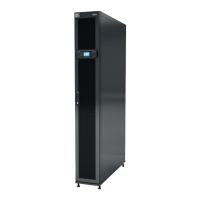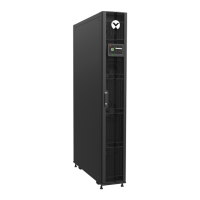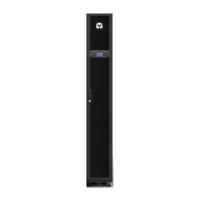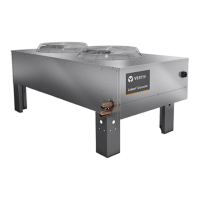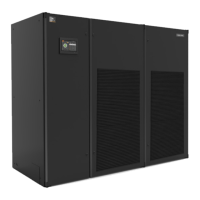Vertiv | Liebert® CRV4 | User Manual 88
System Operation and Maintenance
8.4.2. Maintenance of Control System
Appearance checks and simple functional tests coupled with handling of control parts need to be carried out
on the following items:
1. Carry out visual checks on the power transformers and isolation transformers for any burn marks followed by
testing the output voltage (of the indoor unit and outdoor condensers).
2. Check for signs of aging on the control interface board, control board, temperature and humidity sensor
boards, and fuse boards.
3. Clean the electrical control components and control board to remove dust. Debris, dust, and dirt must be
removed, preferably by a dust removing agent.
4. Check and fasten the Input/ Output ports on the control interface board. It should also include the
connections between the control board and control interface boards as well as the connections between the
Temperature/Humidity sensor boards and the control interface board.
5. Check the connection between the user terminals (70#, 71#, 37#, and 38#) and the control interface board.
6. Check the output connections between the control interface board and various components including
contactors and solenoid valves for liquid pipes. Inspect the input connection between the control interface
board and various components, including high pressure switches, heating over-temperature protection
switches, discharging temperature and high pressure sensors. Specically, check the inserting terminals
such as high pressure switches and heating over temperature switch followed by replacing the component if
it is loosened or in poor condition.
7. Replace the faulty electrical components such as faulty control fuses (or MCB’s) and control boards.
8. Check the trunking or insulation condition of the control and power cable connected to the outdoor unit
from the indoor unit. Replace the cable, if required.
9. Use a temperature/ humidity measuring meter with high precision to calibrate temperature/ humidity sensor.
10. Regulate the setting point. Meanwhile, check the action of the various function components according to the
control logic.
11. Simulate and inspect the operation-and-working states of protecting units such as high/ low pressure alarm,
high/ low temperature alarm, high water level alarm, and over-temperature alarm and over-temperature
protection.
12. Check the sensors.
8.4.3. Water-Leak-Detector
When the unit is installed on the raised oor, the water leak detector are arranged on the ground under the
oor; when the unit is installed on the oor, the leakage water detector are arrange on the oor. Conrm the
alarm information through the controller. The detector should be located away from any water pool or drainage
discharge on the oor, 2 m to 2.5 m away from the unit. Do not place it directly under the machine. Figure 8-1
shows the recommended location for the water-leak-detector:

